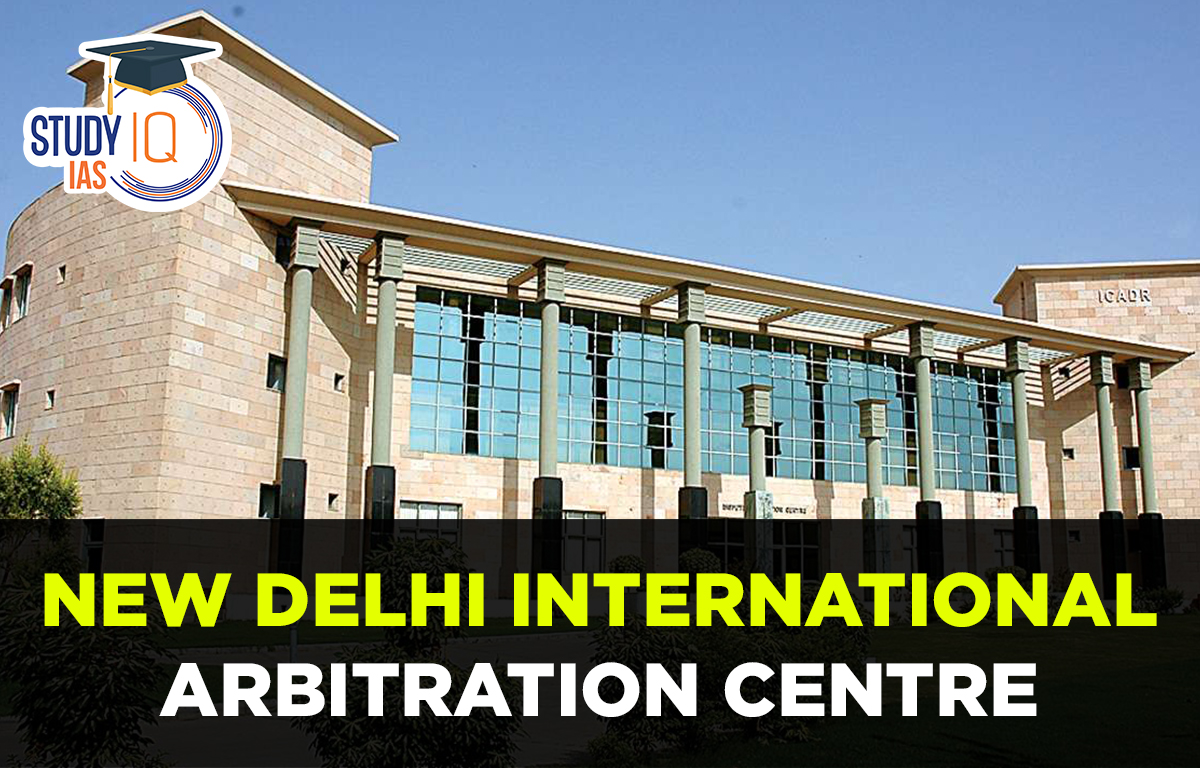Table of Contents
Context: Andhra Pradesh Chief Minister announced plans to establish an international arbitration centre in Vizag.
What is an Arbitration Centre?
- Arbitration is a form of Alternative Dispute Resolution (ADR) where parties to a dispute agree to submit their case to a neutral third party (the arbitrator) who makes a binding decision.
- It is an institution or facility set up to resolve disputes outside the traditional court system, using arbitration as the primary method.
Key Features of an Arbitration Centre
- Neutral Forum: Provides a neutral space for resolving disputes, often chosen when parties are from different regions or countries.
- Arbitrators Panel: Maintains a panel of expert arbitrators in various fields like trade, investment, commercial law, technology, etc.
- Efficiency: Generally faster and less formal than courts, aiming for quicker dispute resolution.
- Confidentiality: Proceedings are private, unlike court cases, which are usually public.
- Flexibility: Parties have flexibility in choosing arbitrators, language, rules, and procedures.
- Enforceability: Arbitration awards are legally binding and enforceable, often internationally under treaties like the New York Convention (1958).
Arbitration in India
- Governed mainly by the Arbitration and Conciliation Act, 1996, based on the UNCITRAL Model Law (United Nations Commission on International Trade Law).
- Amended multiple times (2015, 2019, 2021).
New Delhi International Arbitration Centre (NDIAC)
About
- NDIAC was set up in 2019 under the provisions of the New Delhi International Arbitration Centre (NDIAC) Act, 2019, for better management of arbitration in India.
- The Act declared NDIAC as an institution of national importance.
- NDAIC has replaced the International Centre for Alternative Dispute Resolution (ICADR), an existing institution established in the year 1995.
Objectives
- Promoting research, providing training and organising conferences and seminars in alternative dispute resolution matters.
- Providing facilities and administrative assistance for the conduct of arbitration, mediation and conciliation proceedings.
- Maintaining a panel of accredited professionals to conduct arbitration, mediation and conciliation proceedings.
Key Functions
- Facilitating conduct of arbitration and conciliation in a professional, timely and cost-effective manner; and
- Promoting studies in the field of alternative dispute resolution.
Composition of NDIAC
The NDIAC will consist of seven members, including:
- A Chairperson who may be a Judge of the Supreme Court or a High Court, or an eminent person with special knowledge and experience in the conduct or administration of arbitration;
- Two eminent persons having substantial knowledge and experience in institutional arbitration;
- Three ex officio members, including a nominee from the Ministry of Finance and a Chief Executive Officer (responsible for the day-to-day administration of the NDIAC);
- A representative from a recognised body of commerce and industry, appointed as a part-time member, on a rotational basis.
Term and Superannuation
- The members of NDIAC will hold office for three years and will be eligible for re-appointment.
- The retirement age for the Chairperson is 70 years, and for other members is 67 years.
Finance and Audit
- The NDIAC will be required to maintain a fund which will be credited with grants received from the central government, fees collected for its activities, and other sources.
- The accounts of the NDIAC will be audited and certified by the Comptroller and Auditor-General of India.
Institutional Support
- The NDIAC will establish a Chamber of Arbitration, which will maintain a permanent panel of arbitrators.
- Further, the NDIAC may also establish an Arbitration Academy for training arbitrators and conducting research in the area of alternative dispute resolution.
- The NDIAC may also constitute other committees to administer its functions.
India as an International Hub of Arbitration
- India is the fourth biggest economy in the world, yet we are not the international hub of arbitration, while small countries and cities have emerged as major centres for arbitration.
- Presently, places such as Singapore, London and Hong Kong are the preferred centres for arbitration.
- NDIAC can provide arbitration awards at more affordable charges in comparative to those centres.
The New Delhi International Arbitration Centre (Amendment) Bill, 2022
- The bill was passed by the Rajya Sabha on 14th December 2022.
- Key provisions of the amendment bill include:
- Renaming: The Bill renames the New Delhi International Arbitration Centre as the India International Arbitration Centre.
- Alternative Dispute Resolution: The original Act requires the NDIAC to strive to facilitate the conduct of international and domestic arbitration and conciliation. The Amendment Bill expands this to include the conduct of other forms of alternative dispute resolution.
What is Alternative Dispute Resolution (ADR)?
- ADR refers to the methods of resolving a dispute, which are alternatives to litigation in Courts.
- Generally, it uses a neutral third party who helps the parties to communicate, discuss the differences and resolve the dispute.
- It offers to resolve all types of matters related to civil disputes, as explicitly provided by the law.
- Methods of ADR: Arbitration, mediation, conciliation, and negotiation are usually the most common methods of ADR.
Significance of ADR
- Less Time Consuming: People can resolve their disputes in a short period, as compared to courts.
- Cost-effective: ADR saves all that money, which one spends during the litigation process.
- Confidentiality: ADR proceedings are private. Accordingly, the parties can agree to keep the proceedings and any results confidential.
- Specialisation: Parties can choose an arbitrator skilled in the law they are facing disputes over, for example, patent law.
- Neutrality: ADR can be neutral to the law, language and institutional culture of the parties, thereby avoiding any home court advantage that one of the parties may enjoy in court-based litigation
ADR Mechanism in India
- To encourage out-of-court settlements, the Legal Services Authorities Act was passed in 1987, and the new Arbitration and Conciliation Act was passed in 1996.
- In 2005, the Code of Criminal Procedure added a system for plea bargaining.
- Plea bargaining is a “pre-trial settlement between the accused and the prosecution in which the accused offers to plead guilty in exchange for specific concessions from the prosecution.”
- Lok Adalat, or “people’s court,” is an informal environment that encourages talks in the presence of a judicial officer and allows issues to be resolved without putting too much emphasis on legal jargon.
- The Lok Adalat’s judgment is final and binding on the parties, and it cannot be challenged in court.


 United Nations General Assembly (UNGA), ...
United Nations General Assembly (UNGA), ...
 Universal Postal Union (UPU), Objective,...
Universal Postal Union (UPU), Objective,...
 World Meteorological Organisation (WMO),...
World Meteorological Organisation (WMO),...

























